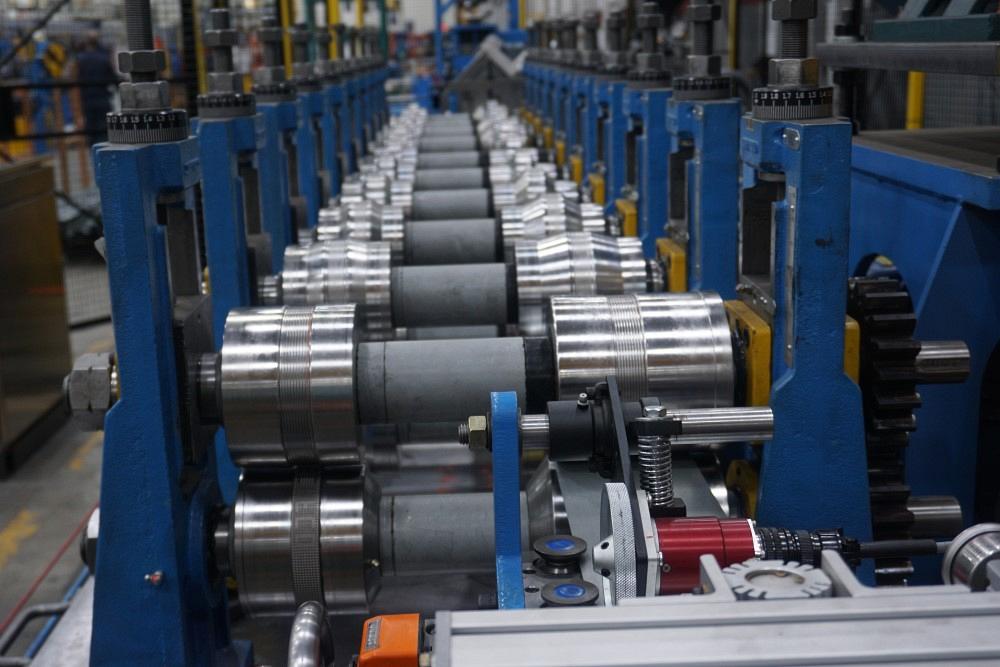A roll former may appear to be a tremendously complex machine, with its wide array of stations and high speeds. It’s worth learning about how it works because it can perform a unique function and create identical end products consistently that meet the strictest of specifications.
To better understand what the roll forming machine is doing, it’s best to break it down to study each place the metal is changed in some manner–be it bent, punched, cut, or folded.
Tooling Function
Whenever sheet metal is changed on a roll forming line, the roll former’s tooling progressively alters the metal’s shape. What starts out as coil undergoes any number of changes before a finished product is packaged at the other end.
The forming is completed by tool steel rolls as they roll over the work metal. Each roll changes the shape of the sheet metal successively as it advances on the line. Ultimately, as the progression of the desired bend or fold increases, more wheels or dies are required to make it happen.
Increasing the bend progression too fast can damage the material and make it challenging to produce a finished product within tolerances. Increasing the bend progression too slowly results in the need for extra dies or forming points at a higher cost. A machine with more forming points also takes up more space on the shop floor.
Punching, Cutting
A roll forming line can form, punch, and cut a variety of metals in a range of gauges for use in many industries, including construction. It’s important to determine if the metal should be punched before or after it’s formed. Punching it after it’s formed may not always be possible or could be more costly.
The sheet metal can be cut at a specific point on a roll forming line. Determining the best spot to make a cut is important because the end product will be different depending on where the cut takes place.
Either way, fabricators must account for flare and determine how forming affects it. When the roll formed part is cut, some residual stresses that were created during the process are released. This opens or deforms the trailing ends of the part. This is known as end flare. If the part is formed in a precut roll forming process, the stresses could be greater than for a part formed in a postcut roll forming process.
Read more: A better understanding of roll forming and its tooling






